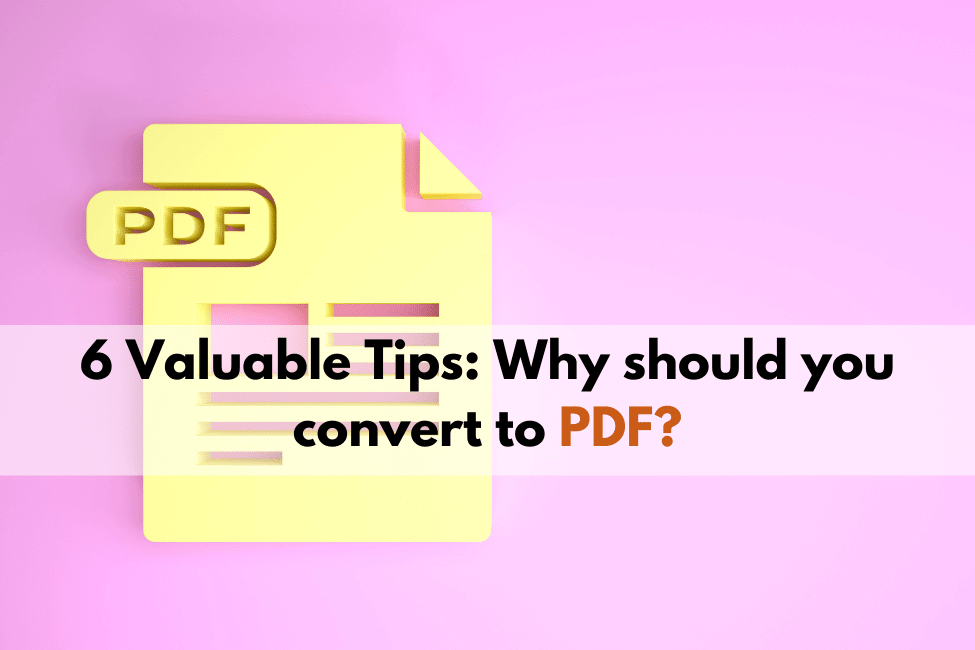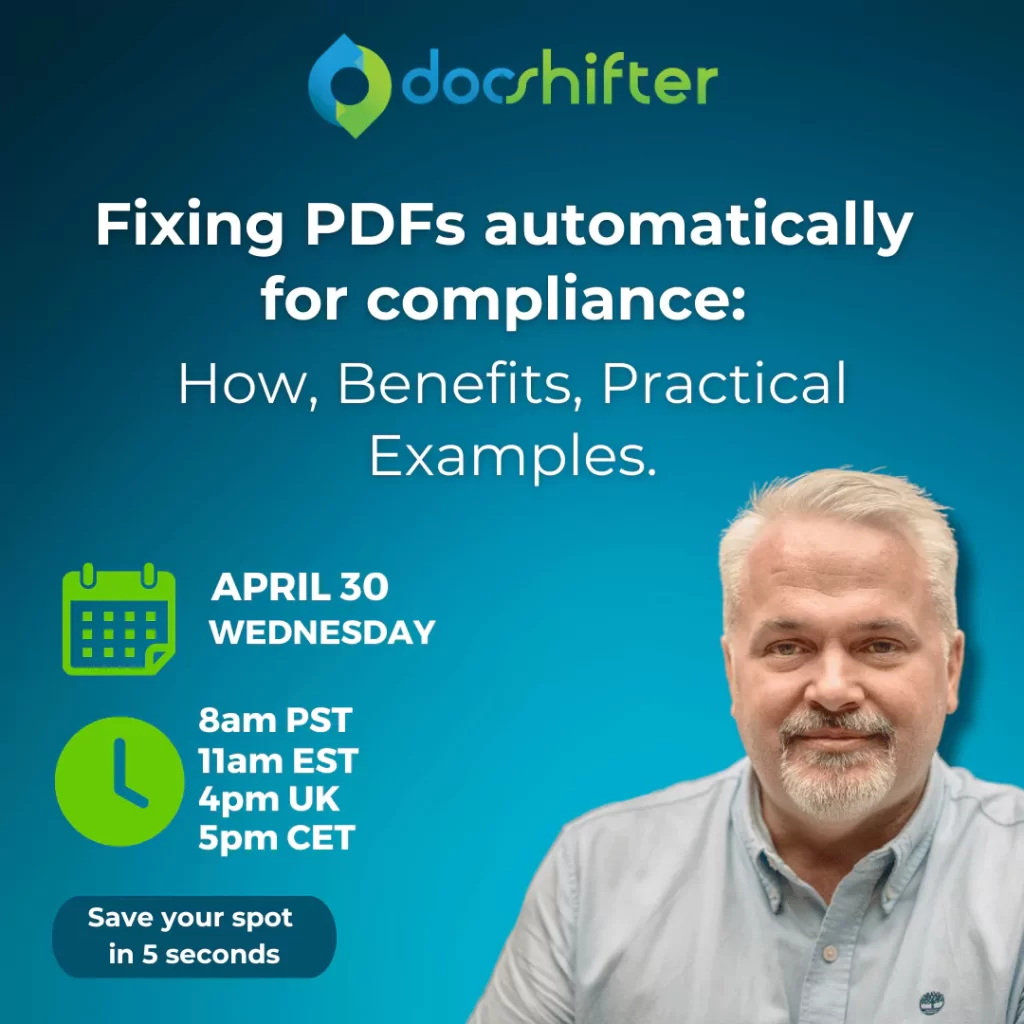
6 Valuable Tips: Why should you convert to PDF?
-
By Othmane Achir
- 5 minutes read
Most companies are not demanding when it comes to the file formats they use. They just use the most common file formats as the logical extension of their software tools. The best example is the Microsoft Office package. Although Word is a good program for word processing, text editing and file formatting, a Word-file (.docx) is not the best suited file format for storage, archiving, sending sensitive and private data, and internet sharing purposes.
AFP (Advanced Function Presentation) is another example of a widespread file format. However, you can find more efficient file formats than AFP for what it is used. The file format was originally created by IBM as a data format for transactional printing purposes. AFP files are only recognized by hardware that supports Intelligent Printer Data Stream (IPDS), a print protocol commonly used by printers in mainframe environments. If you want the data in your AFP files to be accessible by everyone, regardless of the hardware or operating system used, you should consider converting your AFP files to PDF. Working with PDF is easy, cheap, efficient and very common.
In fact, PDF is an excellent file format for a lot of your business documents. Not convinced yet? We will give you 6 good reasons why converting to PDF is an added value for your business.
The 6 benefits of PDF for your business
- Working with PDF is cheap!
It is not required to buy any type of costly software application to view a PDF file.
You can find a lot of free downloadable PDF readers for any operating system. PDF documents can be easily distributed digitally for practically no cost.
- PDF files can be viewed by anyone, anywhere.
PDF documents can be shared, viewed, and printed by anyone, on any system, regardless of the operating system, original application, or fonts. PDF ensures that files sent across the world can be viewed on different computer systems without any change in the look and feel of the original document.
- PDF preserves all document attributes.
The PDF format is capable of maintaining all document information of the source file, including text structure, formatting elements, visual elements and vector graphics. Even multimedia features like hyperlinks, mark-up, text notes, movies and music are preserved when converting to PDF.
- PDF allows the safe processing of your sensitive digital documents.
The PDF format supports various types of encryption, digital signatures, and password restricted viewing, copying, and even printing. It is even possible to provide your confidential PDF documents with a digital seal to ensure the origin and the integrity of the document. The receiver of such a digitally sealed document can trust that the document has not been tampered with and that its source is identified. This makes the PDF format just right for confidential documents that are sent over the internet or used in a Web browser application.
Thanks to the high-security PDF allows, governmental institutions, lawyers, accountants and other sensitive-data sharers rely on PDF to protect their sensitive documents.
- PDF supports file compression without loss of quality.
PDF allows a significant compression of files. The PDF standard drastically reduces document size while preserving the original document quality. This is especially important when looking at visual aids like graphs and charts that might have a lot of small details, but it also allows you to magnify things written in small font size that might be missed otherwise.
Converting graphics, spreadsheets and word processor documents to PDF reduces document size considerably. The small size of a PDF file enables it to be easily emailed and shared, and leads to real savings in expensive email server storage and bandwidth congestion.
- Extra functionalities make PDF easy to work with.
PDF documents can be made searchable, which makes them very easy to navigate. If you receive a long business document, you will be able to use the search function and find what you are looking for by simply searching for a keyword or phrase.
It’s also possible to embed metadata (title, author, creation date, etc.) into your PDF file. Metadata are important for any downstream processing of the document, such as archiving, but do not affect its final appearance.
PDF also continues to rise in popularity because it’s possible to include additional attributes such as reading direction and alternative explanatory text for images.
The DocShifter Solution: Business PDF Converter
At DocShifter, we are convinced that high-quality PDFs add value to every business. That is why DocShifter is an automated, cost-efficient PDF converter solution for businesses in any industry: making it possible for every input format to be transformed into a high-quality PDF file.
Supporting 300+ file formats, at an extremely fast processing speed, DocShifter allows:
- Connectivity with any content repository.
- Adding security options to PDF output
- Optional OCR capabilities
- Merging multiple source files
- Fully automated, high-quality PDF creation for high volumes
- And many more.
Interested in trying DocShifter for your business needs?
About DocShifter
Speed, quality, scalability, and configurability are reasons why Life Sciences organizations choose DocShifter to generate technically compliant, submission-ready PDF. High volume, high-quality document conversion, on-premises, or in the cloud. Super easy to set up. Automate. Centralize. Eliminate manual intervention. Reduce risk. Reduce IT infrastructure costs. Rated 5 starts on Gartner’s Capterra platform.


